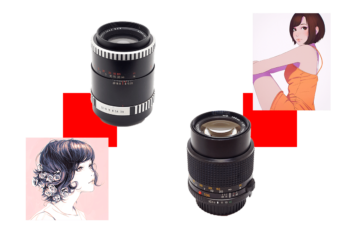Carl Zeiss 28mm 1:2.8 Distagon T* Contax/Yashica – review

Lens review: Carl Zeiss Distagon 2.8/28 T* Contax / Yashica aka Carl Zeiss 28mm 1:2.8 Distagon C/Y
Considered as one of the best 28mm lenses ever. Let’s check it.
The lens for the test was provided by Egor Nikolaev (Егор Николаев) – many thanks and greetings.
Carl Zeiss 28mm 1:2.8 Distagon specifications:
| Name engraved on lens | Carl Zeiss Distagon |
| f[mm] | 28 |
| A max [1/f] | 2.8 |
| A min[1/f] | 22 |
| Lens design [el.] | 7 |
| Lens design [gr.] | 7 |
| Filter thread Ø front(rear)[mm] | 55 |
| Lens Shade (Lens Hood) | G-12 soft hood or No.1 metal hood |
| closefocus[m] | 0.25 |
| Dimension Ø x length [mm] | 62.5/50 |
| Weight[g] | 284gr |
| Year | 1975(?)-2005 |
| Style | — |
| Notes | Two editions – are similar by IQ |
More data
| Floating elements | NO |
| Aperture blades number | 6 |
| Confidence in the test results of reviewed copies | Enough High |
| Reviewed Lens SN: | 6631574 |
Historical note
This lens has two versions – AE and MM.
The difference between “AE” lenses and “MM” lenses is the type of automation they allow with the Contax bodies. AE lenses were the first Contax (C/Y) lenses and they provided for aperture-preferred automatic exposure. Later, MM lenses were produced that had an additional linkage to the camera body to allow shutter priority and program auto exposure modes. (source)
The particular tested copy is “AE” and it is marked “Made in Japan”, it means the Kyocera production. The front element does not rotate.
I like the feel of working with this lens. It has a convenient weight to size ratio. The design is quite monolithic. Special note about the diaphragm ring – there is a feeling that it rotates on grease, this is not like many other lenses of those times.
Carl Zeiss 28mm 1:2.8 Distagon lens exterior:
Carl Zeiss 28mm 1:2.8 Distagon sharpness
Сlose-distance resolution test, minimal distance
Testing methods description
- Target: 10-15 cm picture, printed on glossy photo paper
- Distance: 1.7m
- Camera: Sony A7II (24mpx, full-frame, tripod, remote control). M-mode, ISO fixed, WB fixed, SteadyShot – OFF.
- The test was repeated for every F-stop on every focus position with manual focus adjustment for each shot. That is to avoid the effect of field curvature.
- RAW processing: Capture One, default settings. All quality settings – 100%. Crops – 300×200 px
Original target image (printed in horizontal orientation on 10cm X 15cm glossy photo paper)
Scene preview
Test results
Long-distance resolution test
Testing methods description
- Target: cityscape
- Distance: > 200 meters to center focus point
- Camera: Sony A7II (24mpx, full-frame, tripod, remote control). M-mode, ISO fixed, WB fixed, SteadyShot – OFF. The focus point is on the center only.
- RAW processing: Capture One, default settings. All quality settings – 100%. Crops – 300×200 px
Scene preview
(note for perfectionists: yes, I know about the angle of horizon here)
Test results
Carl Zeiss 28mm 1:2.8 Distagon aberrations
Vignetting
Geometric distortion
Coma aberrations
Chromatic aberrations
Long-distance bokeh
Test#1:
Test conditions: the lens was focused on minimal distance on the scale (0.25m), buildings are on “infinity”-distance
Test#2
Test conditions: lens was focused on 1m
Light bubbles bokeh – long distance
The lens is on the minimal focusing distance 0.25m, lights are on infinity (cityscape)
Other resources with reviews
- slrlensreview.com – here is detailed information including tests
Carl Zeiss 28mm 1:2.8 Distagon final conclusion:
Yes, definitely, this Distagon is one of the best 28mm I’ve taken in hands ever. It has almost no weaknesses.
In general, making a successful 28mm lens is not an easy task and this lens turned out to be just wonderful. There’s nothing to complain about, well, maybe except the price, but, frankly, I don’t have any special complaints even about the price – there are a lot of these lenses on sale and if you have the patience, you can get one for the reasonable price.
The lens is ready for landscapes at F5.6. The best sharpness over the frame distribution is at F8 but this result is amazing for 28mm lenses. The behavior on close distances is the same as for long distances – the nice center and middle even on wide-open apertures and good corners at F8 (or at least after F5.6).
The geometry distortion level is very small. Coma is small too. Chromatic aberrations are almost absent.
Usually, this Zeiss is scolded for strong vignetting, but it isn’t a problem for modern digital cameras with a wide dynamic range, so any vignetting is easily compensated in photo editors.
Can it be recommended? Of course, I have no doubts. Especially if you remember that not many 28mm lenses have a good IQ.






























1 Comment
Thomas · 2022-08-14 at 06:44
Excellent review. I’ve used the Zeiss 28mm Distagon in the field for decades. This report is consistent with my experiences.